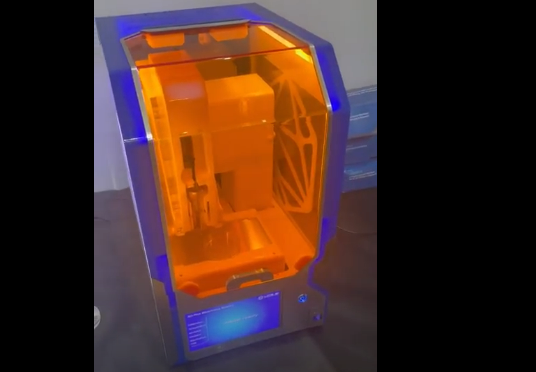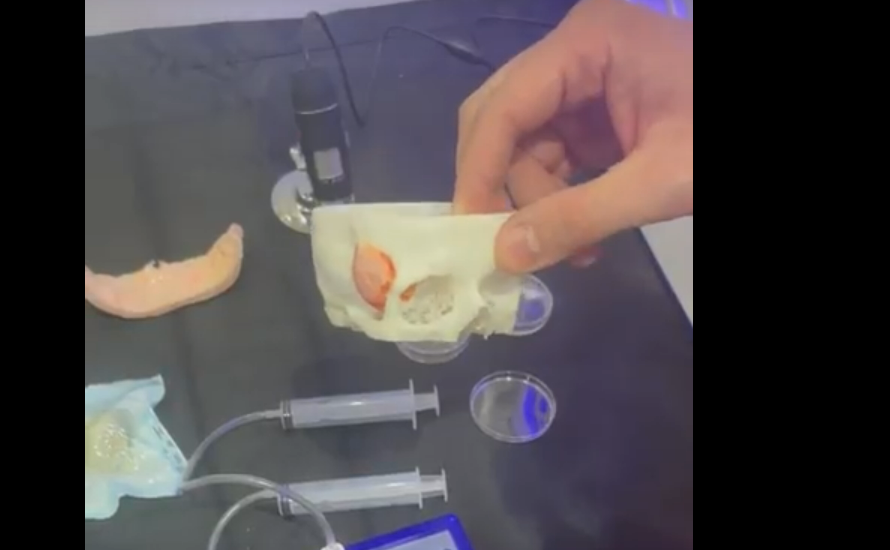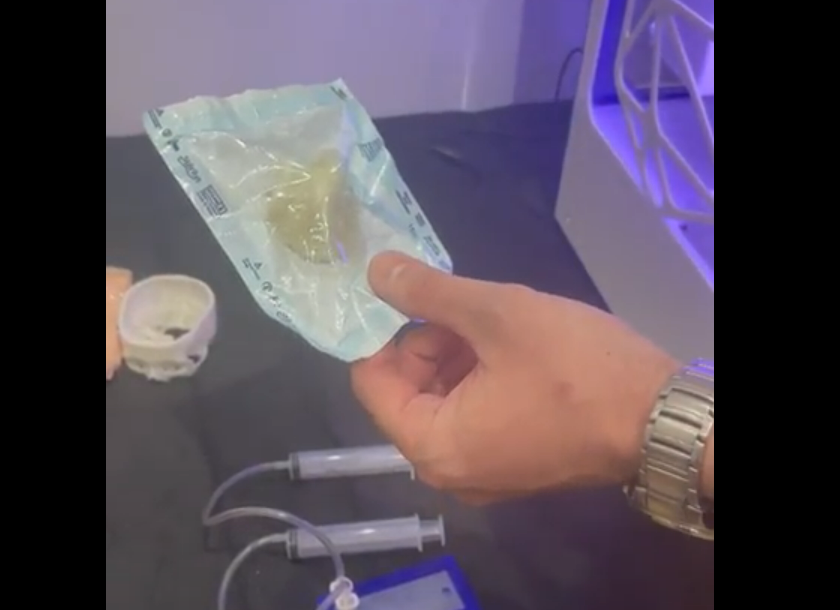
Printing Tumors for Profit
Posted May 16, 2024
Chris Campbell
When I walked into the lab, Adi was printing an ear.
“What do you mean you’re printing an ear?” I asked.
“Exactly what it sounds like.”
He smiled.
Turns out, he was using actual skin cells to print an entire ear.
Made of skin. An ear.
… … …
He was printing human skin into an ear.
At first, I didn’t believe he was telling me what I thought he was telling me.
It sounds like a creepy sci-fi A24 film.
But, in fact, Adi is on the bleeding-edge of biotech.
Let’s back up.
Meet Adi
Earlier this year, I met Adi Díaz Nocera, an entrepreneur from Argentina who founded Life SI, a pioneering 3D bioprinting company.
Adi and his team have developed a technology that uses real patient cells to create biological tissue, opening up a world of possibilities for personalized medicine and life-saving treatments.
Craziest part, it looks like a standard 3D printer. Fortunately, my friend Xenofon took pictures.

3D bioprinting is a process where living cells are deposited layer by layer to create complex tissues and organs. Unlike traditional 3D printing, which uses plastic or metal, bioprinting uses bio-inks made from real patient cells.
This allows for the creation of biological structures that can mimic the functionality of human tissues.
"We started by developing 3D bioprinters," he said, gesturing towards the machine. "These printers use a syringe charged with real patient cells instead of traditional materials like plastic or polymers. This allows us to create biological tissue through 3D printing technology."
It Puts the Lotion on the Skin
One of the first major applications of bioprinted human skin is in the cosmetic industry.
The team developed bioprinted human skin, which can be used to test cosmetics, eliminating the need for animal testing.
Not only would this eliminate the need to torture animals, it also provides more accurate results for human applications. (Human skin, after all, behaves differently than animal tissue when exposed to various substances.)
Adi laid out other applications, like the ability for surgeons to prepare for a complex operation on a patient with a unique tumor.
Traditionally, the surgeon would rely on 2D scans and perhaps some rudimentary 3D models to plan the procedure.
But with LifeSI's technology, they can now print an exact replica of the patient's tumor, complete with cancerous cells, allowing for a practice run before the actual surgery. This not only increases the chances of a successful operation but also significantly reduces the risk to the patient.

And Then He Pulled Out the Tumor
Life SI has also begun exploring the use of bioprinted tissues for drug testing.
In conventional drug development, new medications are tested on animals or simplified cell cultures. These methods, while useful, often fail to capture the complexity of human biology.
Life SI’s approach is different.
By using bioprinted tissues made from patient cells, they can test the effectiveness of drugs in a more accurate and personalized manner. This means that treatments can be tailored to individual patients, enhancing their power and minimizing side effects.
For example, here’s an actual 3D printed tumor.
Using this, you can test drugs before you treat the human with that exact tumor.

But LifeSI's ambitions extend far beyond creating anatomical models.
Their ultimate goal? To create fully functional organs for transplantation using a patient's own cells, eliminating the risk of rejection.
Playing God?
Such work does not come without its challenges.
The notion of bioprinting organs raises ethical questions. Critics argue that it is a form of playing God, interfering with natural processes.
Adi, however, sees it differently.
He believes that it’s cruel to deny people access to life-saving technologies.
For him, the true ethical breach is in allowing preventable deaths to continue when the technology to save lives exists.
Of course, there are also practical challenges.
Creating functional organs is a complex process that requires not just bioprinting but also understanding how to integrate these organs into the human body.
The path to clinical implementation is fraught with regulatory hurdles, technical difficulties, and the need for extensive testing.
Yet, LifeSI’s progress so far suggests that these are not insurmountable.
Adi sees bioprinting as a paradigm shift in medicine.
